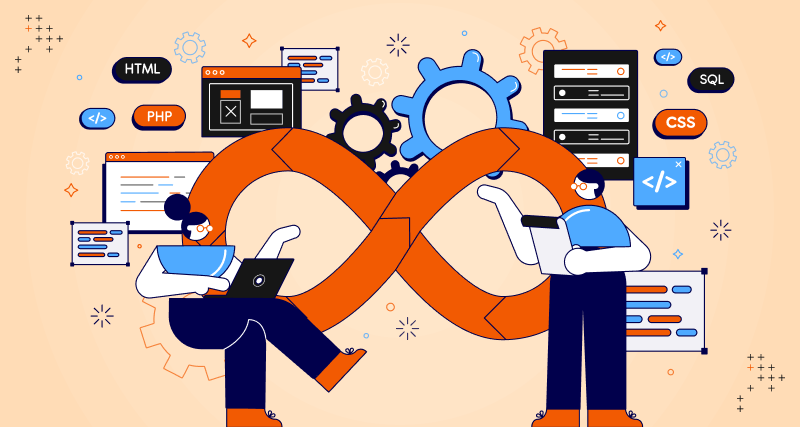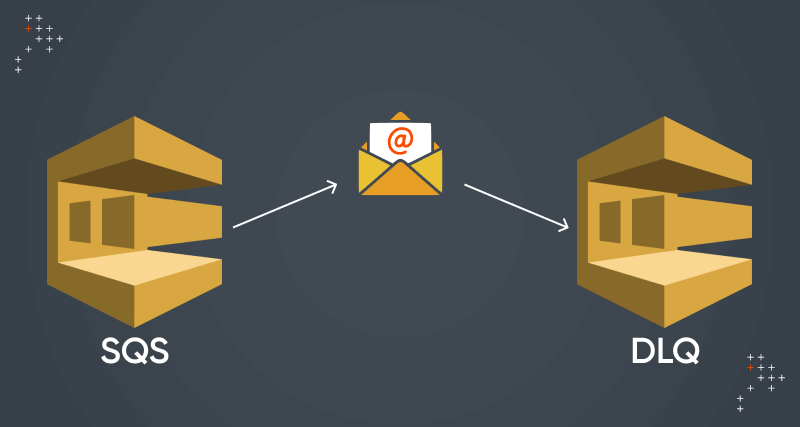Introduction
As cloud-native platforms grow in complexity, trust in DevOps practices often erodes, not due to malice or inexperience, but due to unmanaged sprawl. When production stability, security posture, and deployment velocity become unpredictable, the solution lies not in patchwork but in structural realignment.
This blog explores a technical blueprint for stabilizing fragile DevOps environments through discovery, observability, delivery governance, and architectural refinement.
Common DevOps Instability Pattern
Organizations often reach an inflection point with the following symptoms:
- Multiple AWS accounts and Kubernetes clusters with unmanaged interdependencies
- CI/CD pipelines with weak environment controls, often allowing dev changes to impact prod
- Inconsistent Infrastructure as Code (IaC), some resources managed via Terraform, others manually provisioned
- Untracked secrets and IAM roles with over-permissive policies
- Staging environments that don’t mirror production, reducing release confidence
- On-call rotations lacking structure, runbooks, or real-time metrics
These challenges don’t result from poor intent. They are signals of growth without governance.
Step 1: Infrastructure Discovery
1. Kubernetes & AWS Architecture Mapping
To restore stability, start by dissecting your Kubernetes clusters. Inventory all node groups: are they spread across availability zones, or is everything pinned to one? Check if taints and tolerations are in place to guide pod placement and avoid contention. Review affinity rules to see if high-traffic services are crowding the same nodes, increasing the risk of noisy neighbors.
Assess the usage of Pod Disruption Budgets (PDBs). Without these, voluntary disruptions, like autoscaler evictions or node upgrades, could drain all replicas of a service simultaneously, triggering downtime.
Then evaluate AWS network design: Are your Application Load Balancers (ALBs) deployed in multiple AZs? If not, a single-zone outage could cut off user access entirely. Look for idle EC2 volumes, unattached IPs, and old AMIs, each of these introduces unnecessary cost and operational risk.
2. Terraform And State Drift
Run terraform plan across all environments. If the plan shows large, unexpected diffs, you’re likely suffering from IaC drift, manual changes in AWS that Terraform doesn’t track. This is dangerous: it creates a false sense of configuration ownership.
Ensure all environments use remote state backends (e.g., S3 with DynamoDB for state locking) to avoid collisions. Break down monolith .tf files into reusable modules. Use for_each to scale instance creation dynamically, and locals to reduce repetition.
Automate quality gates using pre-commit hooks that enforce formatting (terraform fmt), security linting (tfsec), and documentation checks (terraform-docs). This enforces rigor before anything reaches CI.
3. CI/CD Maturity Assessment
Review your pipeline stages. Are Terraform plan, approve, and apply split and auditable? Does your Docker build push to dev and prod with the same image digest, or do you rebuild from scratch and risk inconsistencies?
Every image deployed to prod should be tagged with a Git SHA, not a floating tag like latest. This ensures traceability and rollback safety.
Implement GitOps orchestration using ArgoCD or Flux. Use an App-of-Apps pattern to group service deployments per environment. ArgoCD’s drift detection should flag unauthorized changes. Auto-sync can be enabled in staging while production stays gated with manual approval and health verification.
4. Secrets And IAM Analysis
Check how secrets are stored and delivered. If they exist in GitHub repo secrets or shell scripts, you have a problem. Migrate to a dynamic secrets engine like HashiCorp Vault. Configure it to use short-lived AWS STS credentials with automatic rotation.
In Kubernetes, inject secrets via the Vault Agent Injector or CSI Driver, using annotations to request specific policies. Enforce zero hardcoded credentials in application code or environment variables.
Audit IAM roles: are AdministratorAccess or wildcard *:* policies used? Replace them with least-privilege, scoped actions, using permission boundaries and role assumption. Apply SCPs (Service Control Policies) to AWS org units to block risky actions globally. Monitor all changes using CloudTrail + GuardDuty, and route suspicious activity to your SIEM.
5. Incident & Disaster Recovery Readiness
Begin by classifying every service: is it user-facing, internal, batch, or mission-critical? Assign RTO (Recovery Time Objective) and RPO (Recovery Point Objective) values to each. Define what “resilience” means in terms of user impact, not infra jargon.
Automate daily RDS snapshots, EBS backups, and use S3 bucket versioning. For critical services, replicate across AWS regions and enable latency-based DNS routing via Route53.
Run DR simulations using AWS Fault Injection Simulator. Practice failover: fail an RDS instance, watch Route53 shift traffic, validate recovery in your observability stack. Track time to detect (TTD), time to recover (TTR), and log inconsistencies between primary and replica regions.
Step 2: Observability Strategy That Scales
A mature observability layer is more than just logs and dashboards. It's about engineering a signal system that aligns with how your platform fails.
Metrics
Start with Prometheus. Use kube-state-metrics for pod-level state, node-exporter for host-level metrics, and cAdvisor for container performance. For application-specific metrics, expose HTTP endpoints instrumented with Prometheus client libraries (e.g., prometheus-net for .NET, prom-client for Node.js).
Don't stop at raw metrics. Design Service Level Indicators (SLIs) for each tier of your system. For example:
- API response latency (p95 under 250ms)
- Background job queue lag (less than 30 seconds average over 5 minutes)
- Pod restart count (should be zero per rolling deployment)
Establish Service Level Objectives (SLOs) that define acceptable error budgets, and use Alertmanager to notify when those budgets are breached, rather than alerting on every 500 or CPU spike.
Logs And Traces
Implement Loki for log aggregation. It works natively with Grafana and supports structured log queries. Index logs with labels like app, env, region, and deployment_id to support fast RCA.
Pair logs with OpenTelemetry traces exported to Jaeger or another observability backend. Use spans to track cross-service calls, including retries, timeout delays, and serialization overhead. Tracing lets you move from “something’s wrong” to “this endpoint in this service is adding 80ms” in seconds.
Dashboards And Runbooks
Every alert must lead somewhere. Grafana dashboards should be templated (e.g., via Jsonnet or Terraform providers), and alert notifications should include direct links to dashboards and related runbooks.
Store runbooks in version control. Annotate them with Grafana panel links, escalation chains, known failure modes, and mitigation scripts. Treat them like code, not tribal knowledge.
Step 3: CI/CD Hardening And Policy Enforcement
GitOps Structure
Use ArgoCD or Flux to manage application state declaratively. Organize your repos using the App-of-Apps pattern:
- One repo per environment
- One Helm chart per service, using Kustomize overlays for env-specific config
- Automated sync for dev/staging, manual gates for prod with Slack approvals
Enable ArgoCD's drift detection to automatically flag changes made outside Git (e.g., kubectl hotfixes). Alert your SREs when drift is detected and auto-revert where safe.
Build And Artifact Hygiene
Use multi-stage Docker builds to separate dependency installation from runtime code. Base your production images on distroless containers to reduce CVEs and image bloat.
Sign all images using Sigstore and enforce signature verification at deployment. Keep SBOMs (Software Bill of Materials) attached to your builds to track dependencies and license compliance.
Use tools like Conftest and OPA to gate Terraform plans or Helm releases. For example:
- Block changes that reduce instance sizes in prod
- Prevent creating public S3 buckets unless tagged for testing
- Require approval for IAM policy edits affecting
iam:PassRole
Step 4: Risk-To-Backlog Execution Model
Without structured prioritization, stabilization becomes a wishlist. Instead, map every discovery insight into a backlog, then tag it based on:
- Risk Impact: Will this change prevent outages or security breaches?
- Business Dependency: Which customer experience or stakeholder outcome does this affect?
- Engineering Effort: What is the scope, time, and coordination needed?
Example Structure:
|
Task |
Risk |
Type |
Sprint Fit |
Success Criteria |
|
Add memory requests/limits to all Tier-1 services |
Resource saturation |
Quick Win |
2 pts |
HPA scaling metrics stabilize |
|
Enable STS-based dynamic secrets with Vault |
Credential rotation |
Medium |
5 pts |
Static secrets eliminated from CI |
|
Run full cross-region DR failover simulation |
Platform resilience |
Strategic |
Epic |
Sub-15min failover and RPO met |
Use a project tracker (e.g., Jira, Linear) and map epics to themes (security, reliability, delivery speed). Review metrics like:
- Mean Time To Recovery (MTTR)
- % of alerts with linked runbooks
- % of services with complete SLO coverage
- % of infrastructure under Terraform state
Run retrospectives that don’t just ask “what went wrong” but “what did we improve in terms of trust?”
Reframing Stability As A Strategic Enabler
DevOps maturity isn’t a switch; it’s a journey through discovery, telemetry, automation, and accountability. For engineering leaders grappling with invisible outages, alert fatigue, or unpredictable deployments, this use case framework offers a way forward. Not by adding more tools. But by making the system, and how we run it, observable, governable, and resilient by design.
If your organization is experiencing similar growing pains with infrastructure instability, weak deployment pipelines, or fragile incident response, consider this playbook your starting point. Connect with Axelerant to explore how we can collaborate on designing and delivering resilient engineering systems built for scale.

Zeshan Ziya, Senior Software Engineer
When not solving complex technical puzzles, Zeshan finds joy in simple pleasures—reading Chetan Bhagat novels, cheering during a Marvel movie, or exploring the world through multiplayer games and travel. He’s also a cartoon movie buff who’s probably seen every animated classic out there.

 We respect your privacy. Your information is safe.
We respect your privacy. Your information is safe.



Leave us a comment